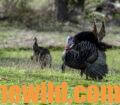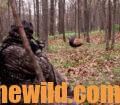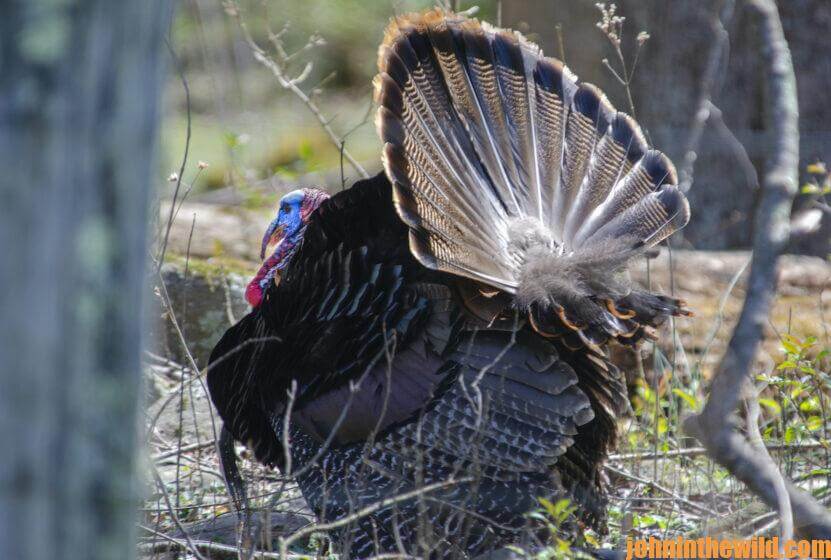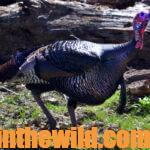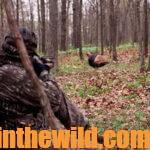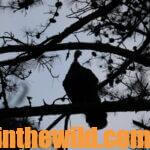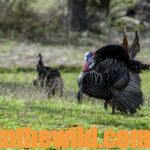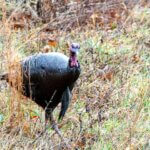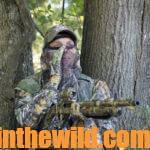Editor’s Note: Fred Darty, today of Tuscaloosa, Alabama, specialized in hunting canny old gobblers – birds that eluded other hunters many times. He learned in his years of hunting turkeys that no one else could take that, “A trophy turkey must be at least 5-years old and must have encountered many hunters. All but a handful of men have given up hunting him. He rarely will come to a hen or a caller. Caution has superseded his sex drive, and he’s probably the wisest creature in the woods.” Darty was like an Olympic athlete. He studied, he trained, and he polished his skills as he competed against the very-best adversaries he could find. He didn’t always win, but that’s what made his hunting turkeys worthwhile.
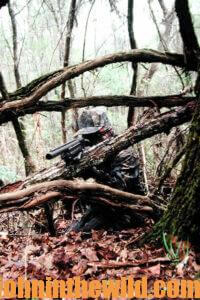 Darty thinks his trophy turkey taking depends 20 percent on his calling ability, 30 percent on detailed information about a particular turkey that he gathers from every possible source and 50 percent on his ability to sit still, hide, move and outflank his quarry.
Darty thinks his trophy turkey taking depends 20 percent on his calling ability, 30 percent on detailed information about a particular turkey that he gathers from every possible source and 50 percent on his ability to sit still, hide, move and outflank his quarry.
“Before I hunt a trophy turkey, I try to talk to as many people as I can find who have tried and failed to take the bird,” Darty says. Darty attempts to avoid repeating the errors other hunters have committed. “Maybe the hunters got too close, shot too quickly or called too much,” he explains. “If they have shot at the turkey in a particular area, I try to avoid setting-up there because I think turkeys soon learn to avoid dangerous places.”
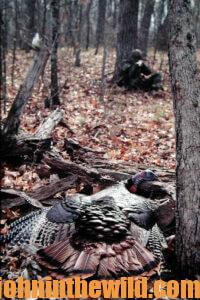 Careful preparation and investigation paid off for Fred when he challenged a turkey on a heavily- hunted wildlife management area. “A friend of mine told me about the turkey,” Fred says. “He’d wounded this turkey slightly the year before after hunting him for a couple of years. The turkey had plenty of hunting pressure every season and was really wary. After collecting all the information I could on the bird, I hunted him for seven mornings before I found out how to take him. This cagey turkey gobbled readily at a long distance in answer to my calling, but would come no closer than 150 yards and then stop gobbling. No amount of calling would pull the turkey within gun range. I decided that this smart turkey knew from past experience how close he safely could come. He apparently gobbled early to let the hens know where he was. After he flew down from his roost, he walked to within 150 yards of where he thought the hens were and waited for them to show-up.
Careful preparation and investigation paid off for Fred when he challenged a turkey on a heavily- hunted wildlife management area. “A friend of mine told me about the turkey,” Fred says. “He’d wounded this turkey slightly the year before after hunting him for a couple of years. The turkey had plenty of hunting pressure every season and was really wary. After collecting all the information I could on the bird, I hunted him for seven mornings before I found out how to take him. This cagey turkey gobbled readily at a long distance in answer to my calling, but would come no closer than 150 yards and then stop gobbling. No amount of calling would pull the turkey within gun range. I decided that this smart turkey knew from past experience how close he safely could come. He apparently gobbled early to let the hens know where he was. After he flew down from his roost, he walked to within 150 yards of where he thought the hens were and waited for them to show-up.
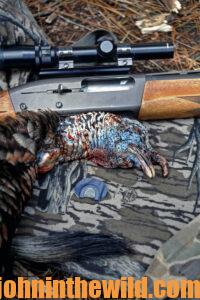 “I’d found some big turkey tracks on a logging road while scouting. The tracks seemed to go directly to that wary turkey’s roost tree. When the woods started to wake up, I gave a short, fast, excited fly-down cackle about 300-yards from where I thought the turkey was roosting. The turkey double gobbled. He sounded like he was choking, he answered so fast. I turned and headed down the logging road at a dead run. When I was within 100 yards of his roost, I stopped and sat down next to a large oak tree and didn’t touch my call. My heart was still pounding when I saw the turkey coming up the road. Once the gobbler walked to within 20 yards of me, I fired. The turkey weighed 20-1/2 pounds and had 1-3/4 inch spurs.” The WMA turkey had two old shotgun wounds – one in his chest and one in the root of his tail.
“I’d found some big turkey tracks on a logging road while scouting. The tracks seemed to go directly to that wary turkey’s roost tree. When the woods started to wake up, I gave a short, fast, excited fly-down cackle about 300-yards from where I thought the turkey was roosting. The turkey double gobbled. He sounded like he was choking, he answered so fast. I turned and headed down the logging road at a dead run. When I was within 100 yards of his roost, I stopped and sat down next to a large oak tree and didn’t touch my call. My heart was still pounding when I saw the turkey coming up the road. Once the gobbler walked to within 20 yards of me, I fired. The turkey weighed 20-1/2 pounds and had 1-3/4 inch spurs.” The WMA turkey had two old shotgun wounds – one in his chest and one in the root of his tail.
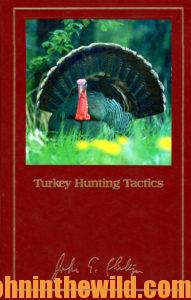 To learn more about hunting turkeys successfully, visit John E. Phillips’ Amazon book page at https://www.amazon.com/John-E.-Phillips/e/B001HP7K6O. For even more information from many of the top turkey hunters and callers, check out the book, “Turkey Hunting Tactics,” https://www.amazon.com/gp/product/B007PK9B2G/ref=dbs_a_def_rwt_hsch_vapi_taft_p2_i3, available in Kindle, print and Audible. You may have to copy and paste this link into your browser. (When you click on the book, notice on the left where Amazon says you can read and hear 10% of the book for free). On the right side of the page and below the offer for a free Audible trial, you can click on Buy the Audible book.
To learn more about hunting turkeys successfully, visit John E. Phillips’ Amazon book page at https://www.amazon.com/John-E.-Phillips/e/B001HP7K6O. For even more information from many of the top turkey hunters and callers, check out the book, “Turkey Hunting Tactics,” https://www.amazon.com/gp/product/B007PK9B2G/ref=dbs_a_def_rwt_hsch_vapi_taft_p2_i3, available in Kindle, print and Audible. You may have to copy and paste this link into your browser. (When you click on the book, notice on the left where Amazon says you can read and hear 10% of the book for free). On the right side of the page and below the offer for a free Audible trial, you can click on Buy the Audible book.
Tomorrow: Why Move on Older Turkeys and Call Less

